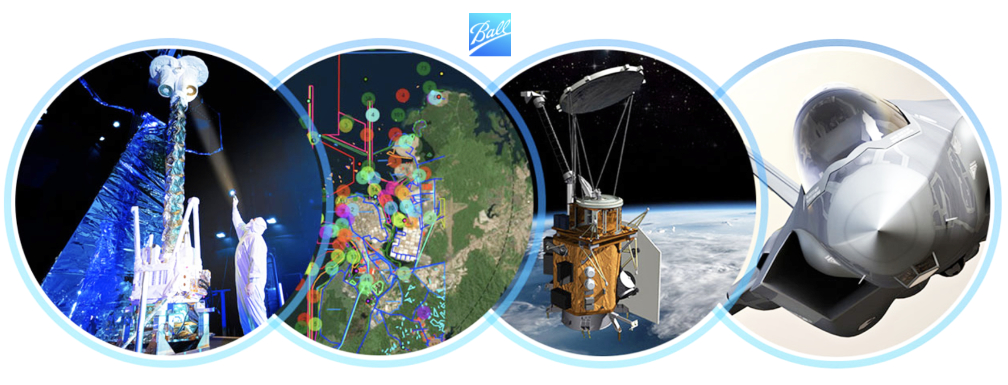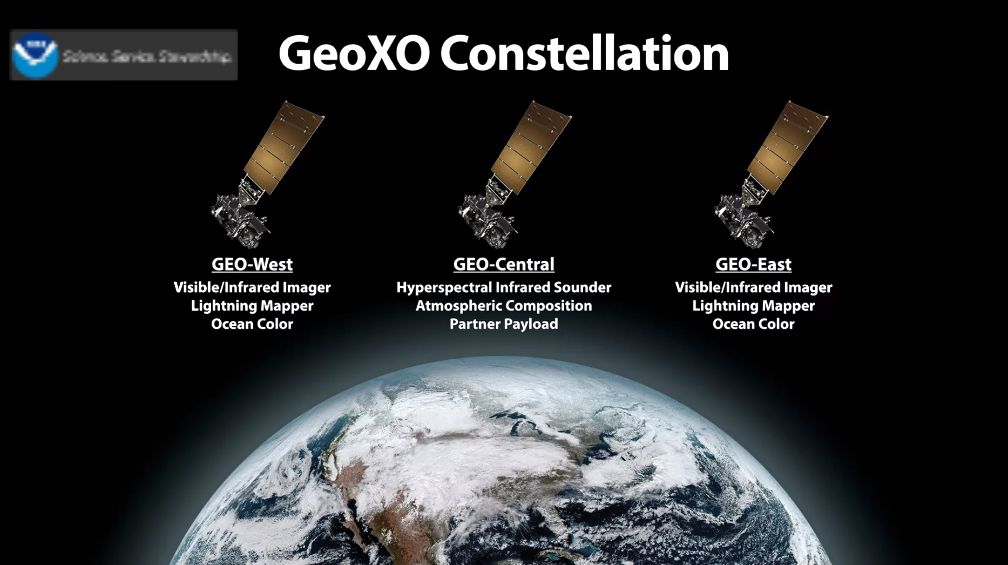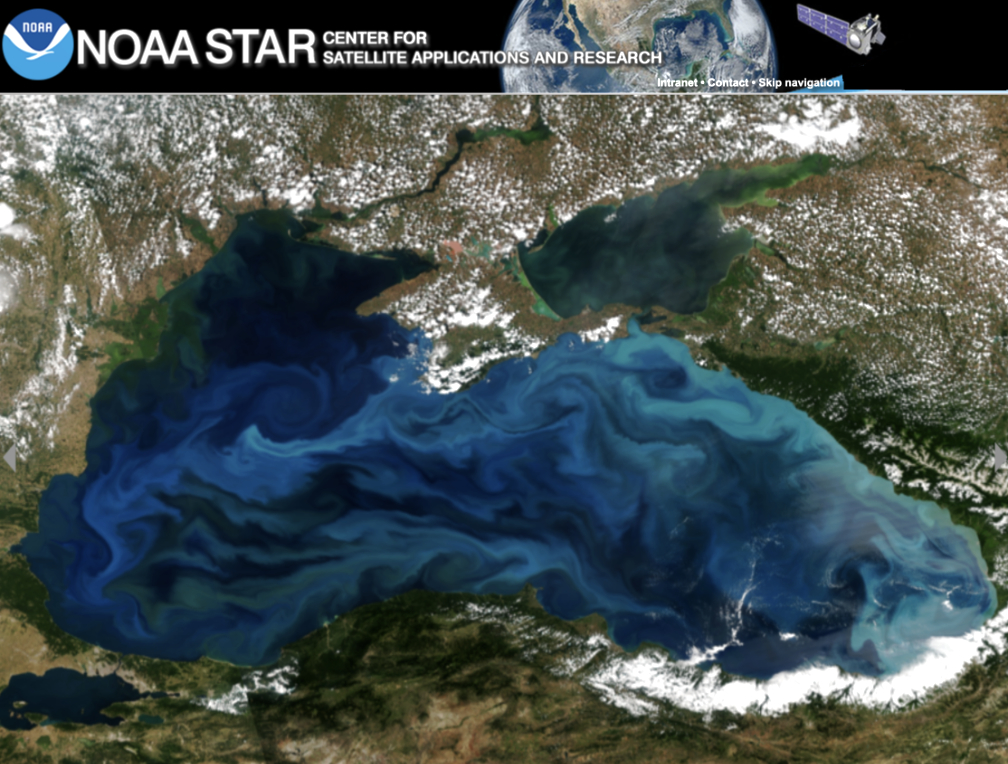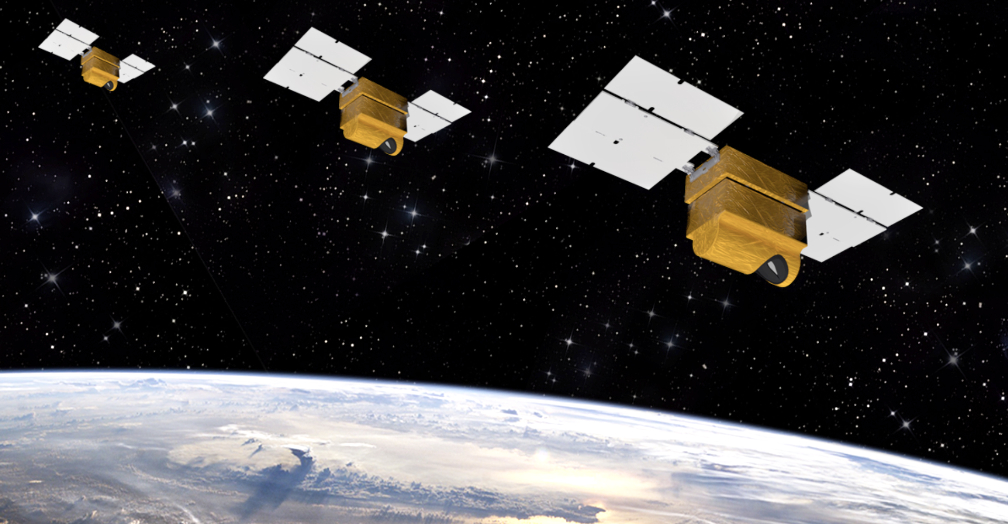
In a one-week period, Ball Aerospace was selected by NASA to complete two, 20-month studies on new instruments to support the National Oceanic and Atmospheric Administration’s (NOAA’s) Geostationary Extended Observations (GeoXO) program: one to measure Atmospheric Composition (ACX) and one to measure Ocean Color (OCX).


Overall, three 20-month studies have been awarded to Ball for the GeoXO program, NOAA’s next-generation constellation of geostationary weather satellites to address critical operational environmental prediction requirements prioritized by NOAA and their stakeholders, as well as major environmental challenges of the future in support of U.S. weather, ocean, and climate operations. In October 2021, Ball was selected for NOAA’s GeoXO Phase A Sounder (GXS) study.
The three 20-month studies will be based on Ball Operational Weather Instrument Evolution (BOWIE), a series of innovative environmental sensing systems to meet next generation, space-based observation needs identified by customers. Both BOWIE-Ocean Color (BOWIE-OCX) and BOWIE-Atmospheric Composition (BOWIE-ACX) are hyperspectral passive imaging instruments.

The BOWIE-OCX is a radiometer designed to collect ultraviolet, near-infrared imagery and identify harmful algal blooms, water turbidity and general water quality to support and assess fisheries management, habitat quality, pollution tracking and biogeochemical processing in coastal regions. The BOWIE-ACX is an ultraviolet visible spectrometer that is designed to enable measurements of trace gases and aerosols with high-temporal frequency and spatial resolution to make air quality predictions across the continental United States.
Ball’s hyperspectral IR sounder, BOWIE-GXS, is designed to provide temperature and moisture profiles through the atmosphere with high spectral and temporal resolution in the mid-wave through long-wave infrared wavebands in a compact form. Data from such a system will provide continuous monitoring over the continental United States and coastal ocean areas, providing early warning of extreme weather conditions due to hurricanes, tornadoes, winter storms.
These will join multiple programs the company developed in recent years to precisely measure atmospheric conditions, including the Geostationary Environment Monitoring Spectrometer (GEMS) for the Korea Aerospace Research Institute (KARI), which launched in February of 2020 to measure air pollution across the greater Asia-Pacific region, and NASA’s Tropospheric Emissions: Monitoring of Pollution (TEMPO) instrument designed and built by Ball, which once launched will measure and track individual air pollutants across North America. Ball also designed and is currently building the methane monitoring instrument for MethaneSAT, LLC, a subsidiary of the Environmental Defense Fund.
“These studies are just the first steps in NOAA’s efforts to improve the nation’s ability to monitor, forecast and understand the conditions impacting weather, climate and health; from air and water quality to coastline health,” said Dr. Makenzie Lystrup, vice president and general manager, Civil Space, Ball Aerospace. “As weather events become increasingly unpredictable and extreme, we need to keep building better monitoring and forecasting tools. The instruments we are helping to define and design will be critical in NOAA’s commitment to building a weather-ready nation.”
